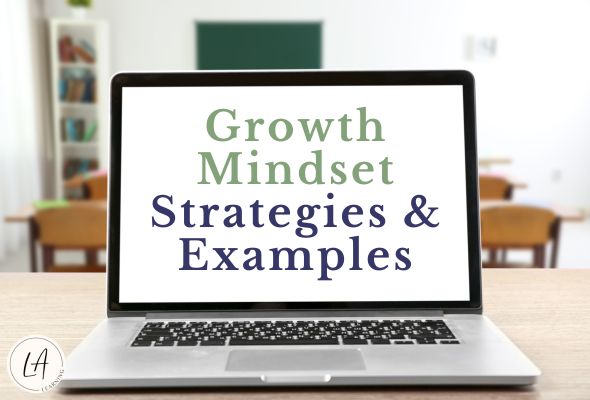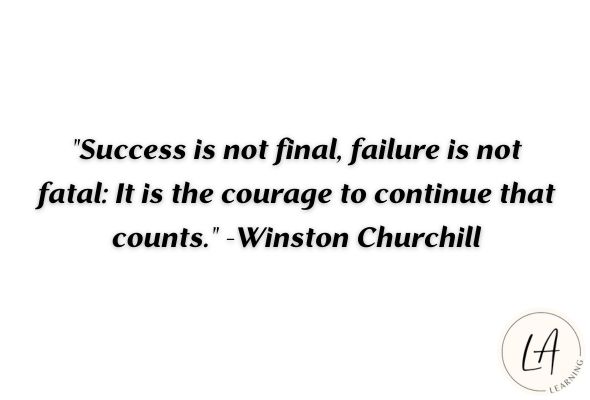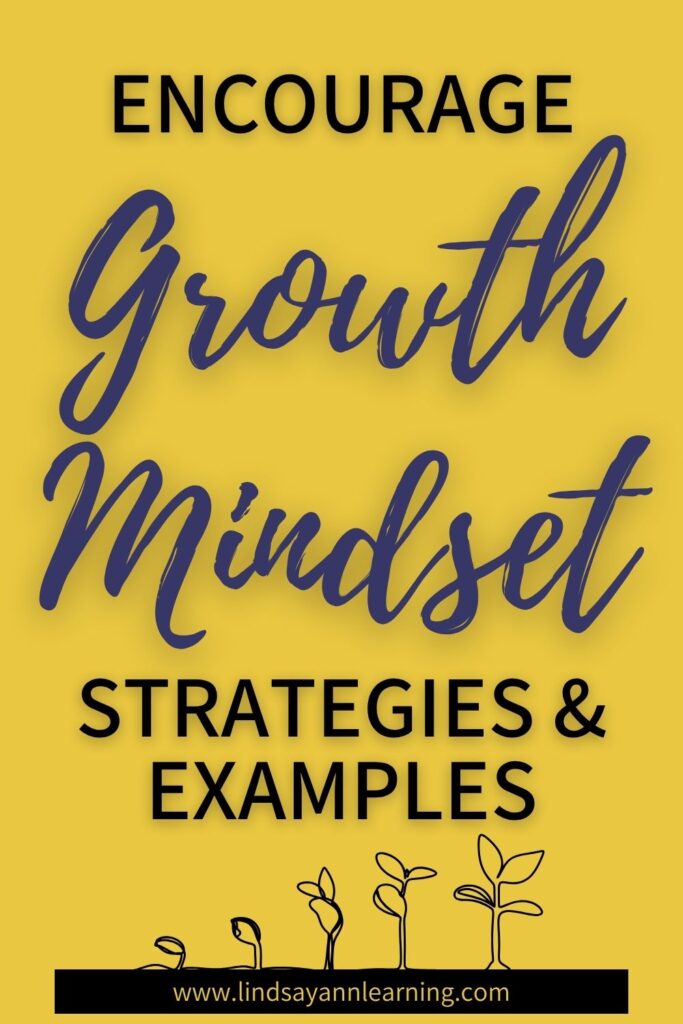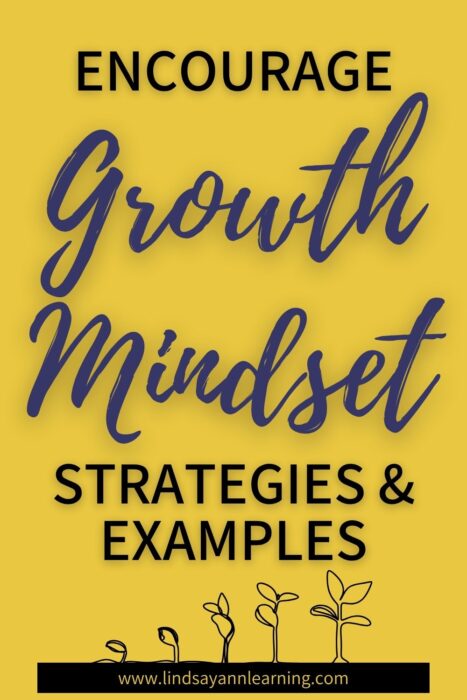Helping students develop a growth mindset can spark transformation far beyond grades and test scores. When students learn to see effort, mistakes, and perseverance as essential to growth, everyday classroom challenges become rewarding milestones. Shifting the focus from “getting it right” to “growing through learning” opens up opportunities for students to be curious, resilient, and empowered. As teachers, we have a vital role to play in making this mindset an active part of our classroom culture.
Below, you’ll find practical strategies and real classroom stories for inspiring a genuine growth mindset in your students. Whether you teach in high school, middle school, or beyond, these actionable ideas can guide you in helping learners reconnect with the joy of developing new skills and seeing mistakes as stepping stones.

What Does Growth Mindset Look Like for Students?
A growth mindset is more than a teaching trend…it’s the belief that skills and intelligence can be developed through effort and learning. For students, this mindset is often reflected in how they respond to mistakes, feedback, and new challenges. In my classroom, I’ve seen the impact labels like “smart” can have. When students are praised only for innate ability, some begin to shy away from challenges, fearing that struggling means they’re “not smart enough.” I remember being labeled “smart” myself as a student. Instead of motivating me, it made me afraid to take risks, and I noticed how the label separated me from classmates, fostering a fixed sense of ability that didn’t leave room for growth but did leave room for fear of failure.
It’s powerful to reframe student thinking. My honors students, despite knowing about growth mindset, still struggle with anxiety around grades and performance. I work to help them move from “I’m just not a math person” or “I can’t write like others” to “I haven’t mastered this yet, but I know I can improve through practice.”
Making this shift isn’t just a personal journey; it’s supported by neuroscience. Brain research shows that struggling and making mistakes actually fuel new learning. Sharing these discoveries with students helps them understand that every challenge is an opportunity for brain growth.
For a clear set of differences, take a look at this post on growth mindset vs. fixed mindset.
Intentional Teacher Moves: Strategies from Experience
Fostering growth mindset takes more than reminders or posters on the wall. It thrives in classrooms where teachers are intentional and reflective in their daily moves.
Normalize Mistakes and Struggle
It can be a challenge to coach students to embrace productive struggle. In classrooms, struggle is often something to be avoided, but other countries encourage it as a regular part of learning. I now intentionally create assignments in my high school English classes that invite creative thinking and risk, knowing some struggle is not just possible, but necessary.
One way I make this practical is by being aware of “the learning pit” which is the idea that real understanding sometimes requires us to be uncomfortable and even get stuck before we climb out with a new insight. I encourage students to share times when they struggled and learned, celebrating these moments as achievements rather than setbacks.

Provide Purposeful, Process-Oriented Feedback
It’s easy to slip into fixed praise like, “You’re a natural at writing.” I’ve learned to catch myself as much as possible and shift to process-based praise. With my students and my own children, I highlight the effort, problem-solving, or creative risks they’ve taken. For example, instead of simply saying “Great job,” I’ll describe what they did, saying something like “You worked through several drafts and tried a new strategy, and I can see real growth in your writing.”
My focus on revision in writing assignments has become a key place to encourage a growth mindset. Students often arrive believing writing is either “good” or “bad” on the first draft, but I emphasize that every piece can improve with practice and thoughtful feedback.
If you’re looking for step-by-step activities, consider this Growth Mindset SEL Activities Calendar to help structure growth mindset and SEL moments.
Offer Choice and Multidimensional Learning
Teaching vocabulary used to mean memorizing definitions. Now I approach it through multiple modalities: students can create visual representations, connect words through concept maps, or write dialogue stories using target terms. This approach allows students who might see themselves as “not good at vocabulary” to find a path to success that feels authentic. Similarly, for note-taking or demonstrating understanding, I allow students to choose formats: sketchnotes, visual summaries, or digital storytelling. This way, each learner can find their strengths while stretching into new areas.
Explore more ideas in this Growth Mindset vs. Fixed Mindset Activities & Goal Setting resource.
Confronting Barriers: Rewriting Limiting Messages
Even as we model and nurture growth mindset in the classroom, students receive powerful fixed-mindset messages elsewhere. Schools often equate success with speed and grades: “Get good test scores to get into a good college.” College and career readiness programs frequently ask students to “figure out what they’re good at,” implying there is a single path or innate talent that defines them.
To challenge this, it’s important to make space for conversations about the myths of “giftedness” and the dangers of labels like “just not a math person.” Share stories, like one of my former students who overcame the assumption that surgery was only for “naturals” in science, discovering his path through perseverance after personal medical challenges.
I encourage my students to reframe negative self-talk. In class, we choose to “swap” statements such as “I’ll never be good at this” for affirmations like, “I haven’t mastered it yet and I’m still learning.” Posting these by my desk or in student journals, and adding daily reminders, reinforces a growth-centered approach.
College and career exploration shouldn’t focus solely on scores or picking the “right” fit early. Instead, you can spotlight stories of people who changed paths, learned from mistakes, or followed new passions after setbacks. You can also gather student feedback about the messages they hear about achievement, sharing that data with counselors and administrators to foster wider awareness of growth mindset principles.
Reflection: Fueling Student Ownership and Resilience

Reflection transforms growth mindset from theory into everyday reality. In my classes, students engage in regular self-checks: after a challenging project, each student writes about a struggle they faced and a strategy they tried or want to try next time. These reflections create a dialogue about learning as a journey, not a contest.
You can also host “four-wall” discussions using growth vs. fixed mindset statements like “Practice makes perfect” or “Only certain people are good at English.” Students select corners of the room based on agreement, and then share their thinking. This activity surfaces fixed-mindset beliefs and fosters open conversation about how attitudes shape learning. Activities like these also give space for students to practice flexible thinking which is an essential component of a growth mindset.
Feedback, too, is a reflection opportunity. Make a point to clarify to your students: “I’m giving you these comments because I believe in your ability to reach a high standard.” By separating feedback from grades when possible, using rubrics and emphasizing progress, you can more intentionally support students’ focus on skill development.
Weekly journals, goal-setting meetings, and intentional pauses to celebrate “productive mistakes” all help cement the message that our classroom values growth, grit, and the willingness to try new things.
Taking Action: Sustaining Growth Mindset Every Day
Building a growth mindset culture is an ongoing process. Here are practical actions you can implement right away:
- Model vulnerability: Share times when you faced uncertainty, struggled, or grew after failing.
- Encourage positive self-talk: Invite students to identify fixed-mindset patterns in their thoughts and gently redirect them.
- Embed growth mindset language: Use phrases like “You don’t understand it yet,” and encourage students to do the same.
- Rotate opportunities: Create project and group rotations ensuring every student experiences both ease and challenge.
- Acknowledge progress beyond grades: Celebrate risk-taking, new strategies, and personal development, not just academic success.
- Leverage resources: Connect your practice to vibrant online communities and downloadable activities for ongoing inspiration.
For more support and classroom-tested tools, revisit the growth mindset resource hub, or explore targeted resources such as the SEL Activities Calendar and Goal Setting toolkit.
Together, we can help every young person know their learning journey is limitless. It’s not about where they start, but about supporting their willingness to grow with curiosity, courage, and community.















 Critical Thinking Skills in ELA Classrooms
Critical Thinking Skills in ELA Classrooms